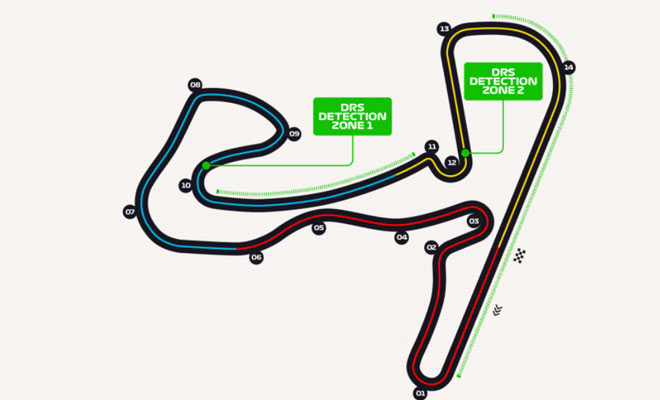The Netherlands Race is back on the Formula 1 calendar, set to take place on August 27, 2023, at Circuit Zandvoort. Despite residing in Monaco, Max Verstappen considers this his home race.

Circuit Zandvoort, with a length of 4307 meters, is one of the shorter tracks on the Formula 1 calendar, comparable to the Hungaroring. The elevation change across the circuit is 15 meters, adding to its allure. Boasting twenty corners, including the iconic Tarzanbocht for potential overtaking and the high-speed Arie Luyendykbocht as the final corner, Zandvoort presents a technical challenge. The sixth corner, Scheivlak, hidden behind a dune, demands a blind entry.
Overtaking opportunities on Zandvoort are relatively limited compared to other circuits. The narrow North Holland track naturally restricts points where overtaking can occur under normal circumstances. The banking in the Luyendykbocht, the long, sweeping corner before the straight, features a significant incline, activating DRS within the corner to promote overtaking.
History of Formula 1 in Zandvoort
The inaugural Formula 1 race at Zandvoort occurred in 1952, with the last race in 1985. The race was held thirty times in the seaside town. Due to insufficient funds for required renovations in 1986 and an outstanding debt from 1985, Zandvoort was removed from the Formula 1 calendar.
Niki Lauda won the last race in 1985, making him the circuit’s final victor. In 2019, the same year the Dutch Grand Prix was announced, Lauda passed away at the age of 70. The circuit announced a tribute to Lauda upon Formula 1’s return in September 2021.
Max Verstappen Exceeds Expectations at Dutch Grand Prix Zandvoort
Interest in Formula 1 in the Netherlands surged when Max Verstappen entered the scene. His transition from Toro Rosso to Red Bull Racing, accompanied by improved results, elevated public attention in the Netherlands. Verstappen is often hailed as the best driver in the Formula 1 field, evident in the heightened anticipation for the Dutch Grand Prix in recent years.
In 2021, when Verstappen had a competitive car and led the championship, expectations were high. The Dutchman aimed to win his home race in front of fans. On Saturday, Verstappen provided a glimpse of what was to come, securing pole position. Despite strategic uncertainties on Sunday, the Red Bull driver clinched victory decisively.
Dutch Grand Prix Zandvoort – Fatal Crash 1973
In the eighth lap of the 1973 Dutch Grand Prix, disaster struck. Roger Williamson experienced a blowout, causing his car to crash and flip. The car caught fire, and Williamson couldn’t escape. Fellow racer David Purley attempted to rescue Williamson, but with marshals offering minimal assistance, Purley unsuccessfully emptied the lone fire extinguisher on the blazing car.
Outside the incident location, the severity of the situation went unnoticed for some time. Purley, mistaken for the driver associated with the wreckage, including by TV commentators, walked around the car. The fire truck arrived too late as the race wasn’t halted. Williamson ultimately succumbed to the fire, not the initial accident.
Williamson’s accident remains a dark chapter in Zandvoort’s history, prompting further safety measures in Formula 1 and around circuits. For instance, the introduction of the halo in 2018 aimed to better protect drivers from flying debris.
Recent Winners of the Belgian Grand Prix
| Year | Winner | Team |
|---|---|---|
| 2022 | Max Verstappen | Red Bull Racing |
| 2021 | Max Verstappen | Red Bull Racing |
| 2020 | Lewis Hamilton | Mercedes |
| 2019 | Charles Leclerc | Ferrari |
| 2018 | Sebastian Vettel | Ferrari |
| 2017 | Lewis Hamilton | Mercedes |
Dutch Grand Prix Zandvoort Dutch Grand Prix Zandvoort
You may also like – Belgian Grand Prix